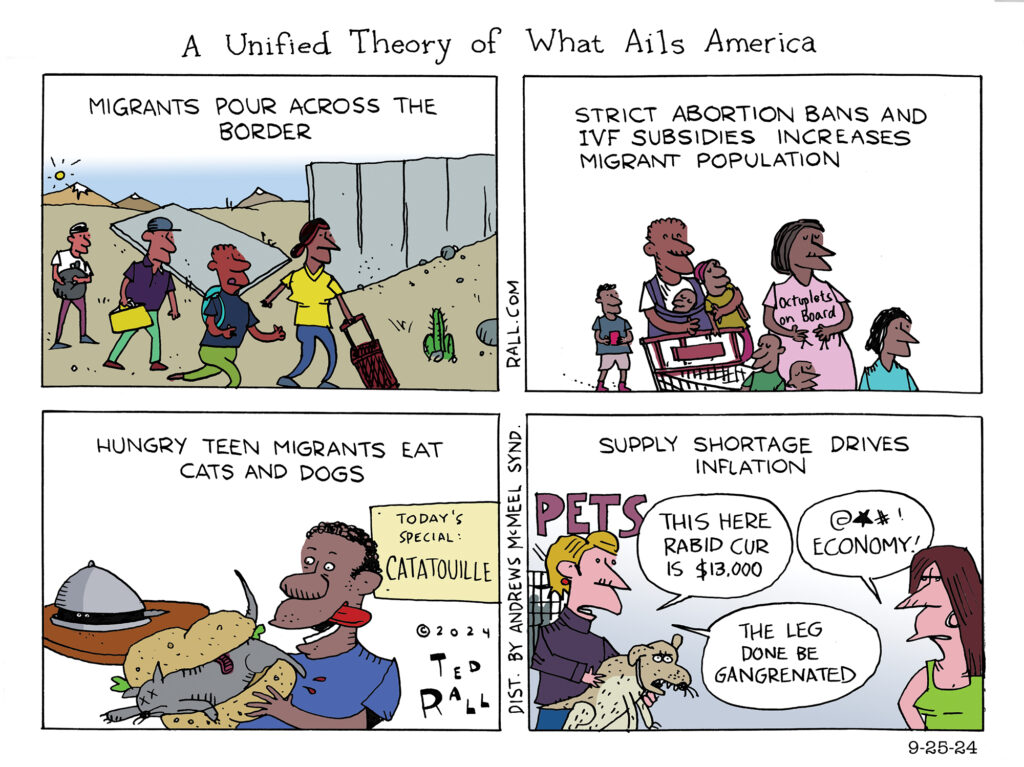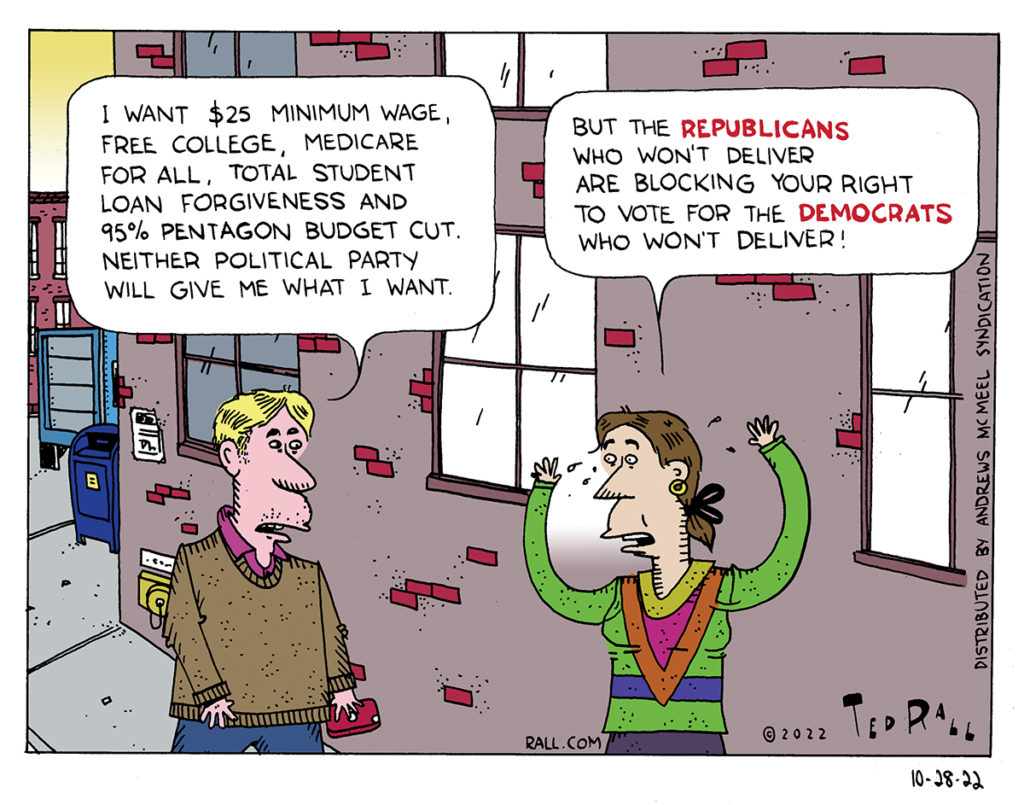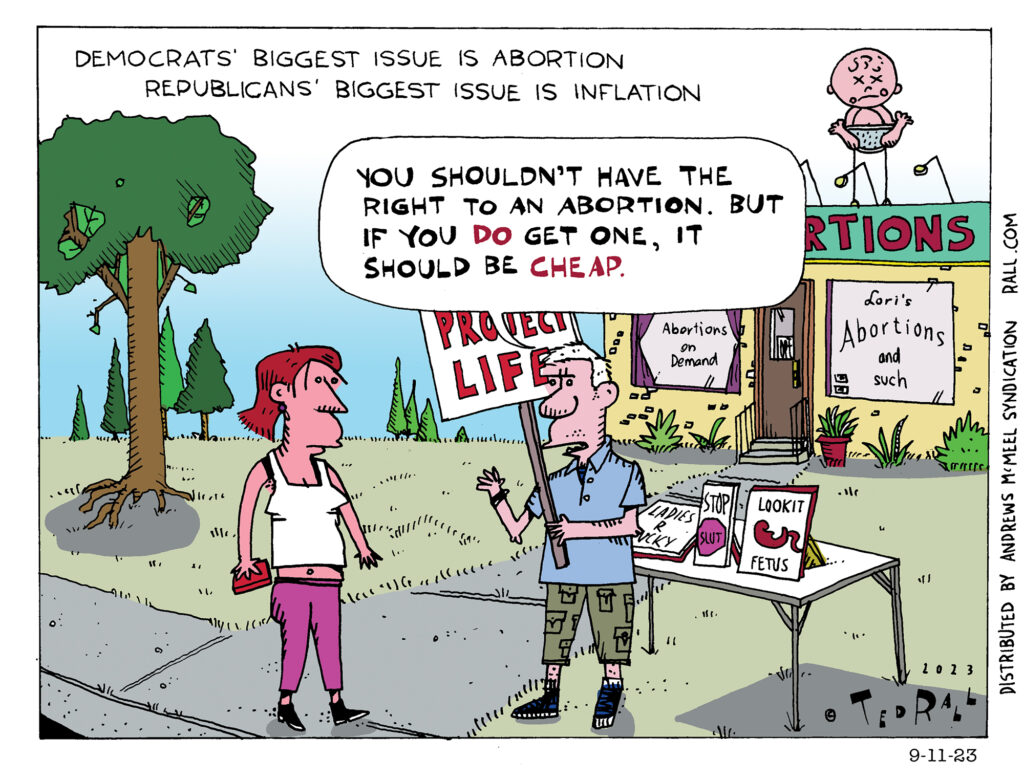Live at 10 am Eastern/9 am Central time, and Streaming 24-7 Thereafter:
Trump made good on his threat to slap tariffs on China, Mexico and Canada over the weekend. All imports from China now face a 10% duty. It’s 25% on imports from Mexico and Canada. Canadian oil, natural gas and electricity, will be taxed 10%. Trump’s order includes a mechanism to escalate the rates charged by the U.S. against retaliation by the other countries, raising the specter of an even more severe economic disruption. Trump demanded that the three nations to stop the manufacture and export of fentanyl and that Canada and Mexico reduce illegal immigration into the U.S.
The tariffs could cause inflation to worsen. They are likely to cause turmoil in supply chains and have an impact on financial markets, though not immediately.
On today’s “The TMI Show,” Manila Chan and Ted Rall discuss Trump’s tariffs and their impacts on your life.


 On
On 
